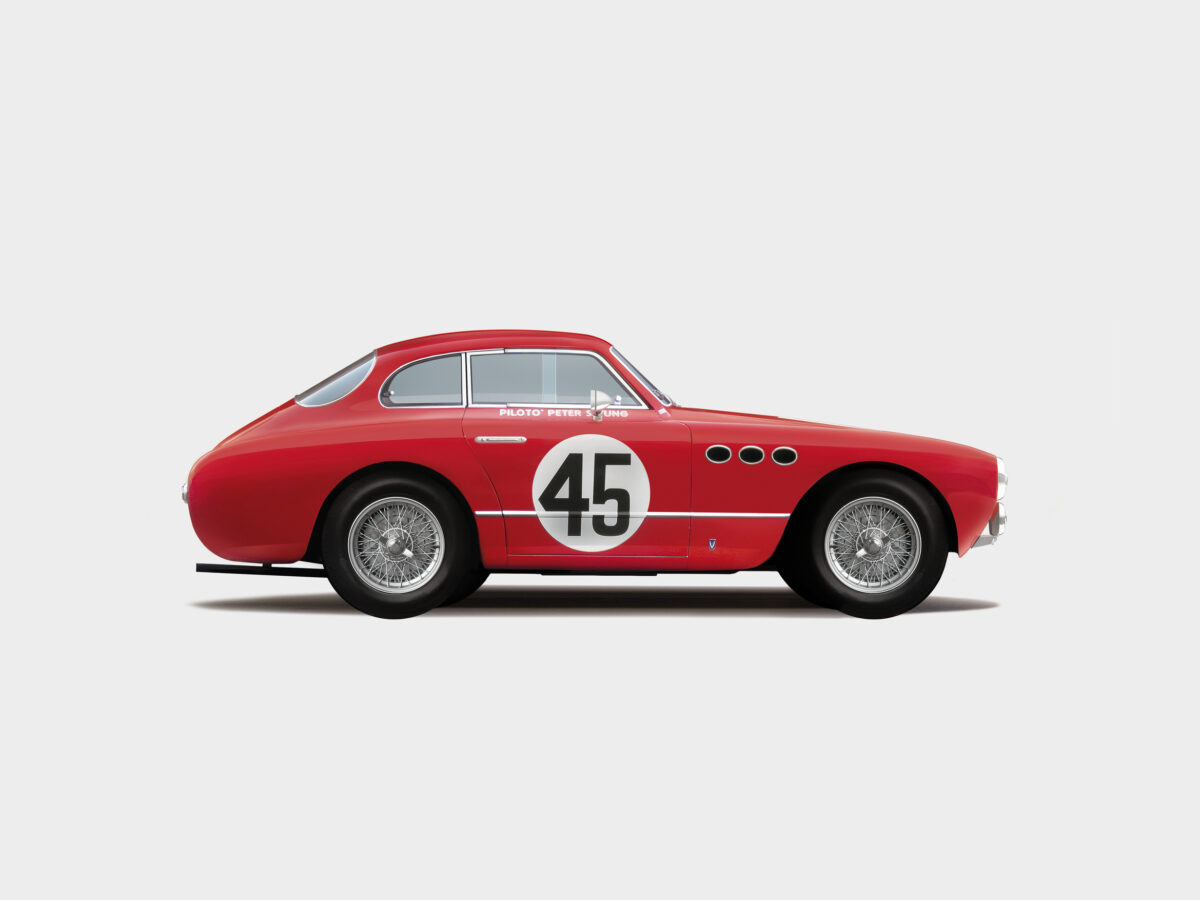Ferrari – 225 S Tuboscocca (1952)
Details
- Vehicle Type:
- Berlinetta
- Coach Builder:
- Vignale
- Cylinders:
- V12
- Engine CC:
- 2715
- Entrant
- Arnold Meier (CH)
Class B
SHAPED BY THE WIND: THE EVOLUTION OF AERODYNAMICS
Enzo Ferrari seemed to always have a sixth sense that enabled him to attract the most talented engineers who then developed incredible engines and cars for him. In the early days of Ferrari, Gioacchino Colombo was the genius who joined the Ferrari development team from Alfa Romeo. Colombo worked alongside Aurelio Lampredi to develop and enhance the infamous V12 Ferrari engines. The displacement of the engines was continually increased and the technology refined. The first evolution was the 2 litre engine installed in the 166. Shortly afterwards, the capacity was increased to 2.7 litres for the 225 and soon the V12 was beefed up to 3 litres to power the 250. The marque was only five years old and yet it was already enjoying huge success. In 1952, the 225 S won the Monaco Grand Prix, organised as a sports-car race, while the Mille Miglia was won by its rather more powerful brother, the 250 S. The chassis was based on a tubular frame with a rigid axle configured at the rear and an independent front suspension with drum brakes and leaf springs all round. The sports car shown at this Concorso d’Eleganza Villa d’Este is one of a few 225 S ‘Tuboscocca’ models which has additional tubes welded into the frame to increase rigidity. The fledgling company’s successes in the most prestigious races of the era against even highly respected competitors aroused interest among the world’s rich and beautiful people – particularly in the USA. It is therefore no surprise that the example shown here was sold on to Luigi Chinetti in the United States after originally being delivered to a customer in Rome during the same year.
And the Italian beauty launched into a hectic racing career in the USA: 1953 at Sebring and 1955 in the Cuban Sports Grand Prix to name just two appearances. This Ferrari has never been fully restored and still wears its original unmodified coupé body built by Carrozzeria Vignale. A total of seven coupés with Vignale bodywork for the 225 S were produced in 1952.
